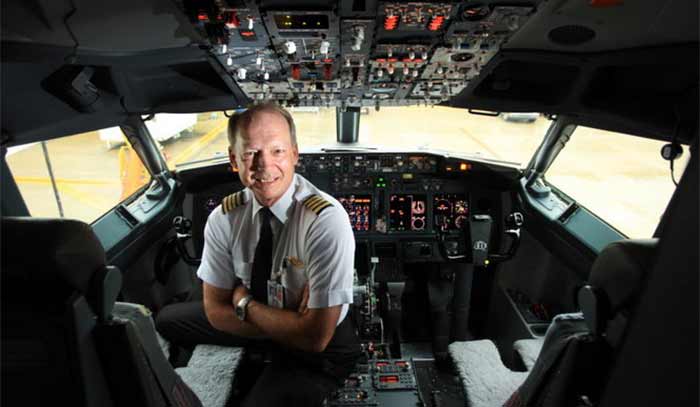
Seniority. It’s the rank among peers “that rules an airline pilot’s life,” says Paul Templeton, a pilot employment expert and retired airline captain. “Seniority determines almost everything you do — what crew base you’re assigned to, what equipment you’ll fly, and your monthly schedule.”
Templeton, creator of the PilotJobs.com blog and a director at airline pilot training academy ATP, says “relative” seniority, or a pilot’s length of service compared to all the airline’s other pilots, gets most attention in career discussions. But other types of airline seniority — captain and first officer seniority, aircraft seniority and base seniority — play equally important roles.
Pilots martial seniority to achieve the earnings, quality of life, and other goals each wants, says Les Abend, a 777 captain and author of Flying’s “Jumpseat” column. Considering these options strategically “opens up a whole different level and hierarchy of choices,” Abend says, adding, “it’s always ‘different strokes for different folks’” in selecting a career course.
The seniority system is based on the premise that all of an airline’s pilots are equally qualified for their positions. “There’s no advancement based on merit, no favoritism,” says United Airlines captain Chris Carey, creator of the online forum AirlinePilot.Life. “It keeps it all fair.”
Instead, career opportunities come with seniority. When more pilots are needed to fly a particular aircraft, or slots open at a base of operations, or next month’s flight schedules are posted, any qualified pilot — even the most junior first officer — can bid for them. But the postings are awarded based on seniority, meaning the least senior captains or first officers usually get the least wanted assignments.
Here’s how the system works in real life:
Relative seniority: Every newly hired airline pilot receives a sequential number, usually assigned chronologically based on age within a training class. Every pilot hired before that date has a lower relative seniority number on the master seniority list, and every pilot hired after has a higher number. As pilots retire and new hires come aboard, a pilot moves up the list and his seniority number gets lower.
Captain and first officer seniority: An airline’s captains and first officers have seniority relative to all the other pilots of those ranks. As not all first officers choose to upgrade to captain, an airline’s most senior pilot could actually be a second-in-command.
Aircraft seniority: Pilots have seniority for the type of aircraft they operate, based on how long they've been flying it. Some aircraft are more in demand than others among pilots, especially as pay goes up with aircraft size. At the top of the food chain are wide-body Boeing and Airbus pilots. It typically requires a lot of relative seniority to bid successfully for a position in the flight crew of a 777, for example. If such a crewmember decided for some reason to downsize to a narrow-body jet — exactly what Carey did — that seniority would likely give them the pick of any such opportunity that arose, but the pilot becomes the most junior crewmember on that platform, regardless of his relative seniority.
Base seniority: Airlines typically operate from several bases, or domiciles, and base seniority reflects the relative seniority of all pilots posted at each. Some bases are more popular than others, and winning a slot assignment may require lots of seniority. Conversely, at a less desirable domicile, a pilot with little relative seniority may nonetheless have more base seniority than most, providing great flexibility in choosing schedules and other work options. But should a more senior pilot transfer to a base, everyone with less relative seniority drops down a peg.
Airlines provide seniority lists for all these categories, so pilots can determine the probable level of competition they face when make choices on everything from bidding on a schedule to upgrading to a new aircraft, or moving from the right seat to the left.
Seniority applies to pilots at both regional and major airlines. With regional airlines offering signing bonuses and other incentives to overcome crew shortages, today it’s not unusual for pilots to quit one regional to fly for another, despite the loss of all seniority that occurs when a pilot leaves an airline. However, once hired by a major carrier, pilots typically stay put, because seniority is too valuable to give up.
Indeed, experts like Templeton say the best advice is to select a training track that leads to a major airline as quickly as possible, because building seniority in all its forms is so important to an airline pilot’s career.

Subscribe to Our Newsletter
Get the latest FLYING stories delivered directly to your inbox






